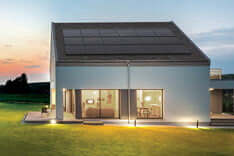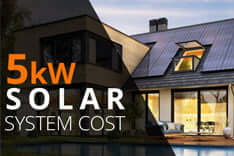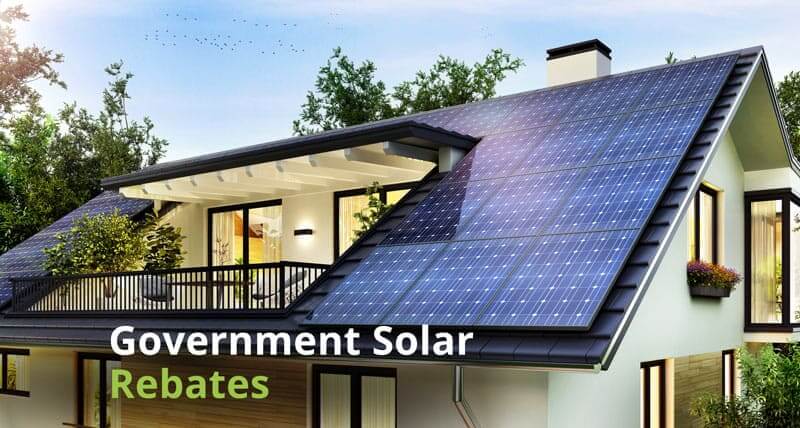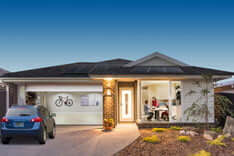Imagine a massive machine lighting up numerous homes and shops over great expanses. This is the function of a central power supply – a gigantic device that sends out power to hundreds, perhaps even thousands, of places requiring electricity.
Distributed power is each home, building or small community generating its own electricity, typically through roof or ground-mounted solar panels.
This protects the grid as there is no single point of failure, and there is a much more efficient output.

Table of Contents
ToggleBenefits Of Distributed Solar
Saves Money
Installation of rooftop solar saves money for households that do it. Once rooftop solar is installed, many households or neighborhoods stop relying on grid power. The more the households use solar power, the less reliant they are on-grid electricity and the less they pay.
Clean Electricity
Distributed solar ensures that homes, businesses, and neighborhoods use clean electricity that doesn’t pollute the environment. Solar power comes from the sun, unlike fossil-based electricity. Thus solar power doesn’t pollute the environment to provide electricity.
Reliable
Compared to grid electricity, distributed solar power is more reliable. Demand for grid electricity has risen as urbanization has grown. As a result, neighborhoods face lots of blackouts. Further, in the hours of high demand for grid electricity, homes get insufficient power.
Once homes install rooftop solar, they will always have power. Neighborhoods, homes, and businesses no longer experience blackouts with distributed solar.
Job Creation
As solar power is adopted by households, more and more companies manufacturing solar panels enter the market. Consequently, this helps create more jobs and helps to develop the economy of Australia.
Disadvantages Of Distributed Solar
Space
The space required to install a distributed solar system may be a challenge. This is especially when the system is required for commercial, utility, or large residential settings.
For a small residential home, you can install your system on the roof. For a much larger setting, you need more space. Even if you need to set it up on a roof, you will need a lot of roof space.
When you set it up on the ground, you will have to use space that could be allocated to other uses.
Safety
When working with distributed solar, you need to consider safety. When connected to the grid, blackouts can cause safety concerns. The change over from one system to another needs to be well connected to avoid a fire from breaking out in the system.
Regulations
Distributed solar microgrids have lots of regulations that many who set them up may not meet.
Sufficiency
Even for large solar system projects, there will be times the weather is not suitable for the generation of electricity. When this happens, the users of solar power will have less power to power their home appliances.
Easily Damaged
Solar panels are mostly maintenance-free. However, they are made with flexible and light material that is easy to break. When installed on the ground, the solar panels and other fixtures are likely to break or damage.
What You Need To Know About Distributed Solar
Scale Of Installation
Distributed solar can be installed in individual households, buildings, businesses, and neighborhoods through solar grid power.
Households can install solar panels on their rooftops or Your solar installer needs to inspect theYour solar installer needs to inspect ground when their roofs are not suitable for installation.
Commercial installations are much larger than household installations. However, this depends on the scale of the commercial activities that need to be powered by solar.
Utility-scale solar installations that serve large areas are also possible. They are expensive projects to build and supply power through a grid to neighborhoods or large businesses.
Upgradeable
Distributed solar power is easy to install. You can do this by adding solar panels to your system to increase the amount of power it produces.
When purchasing solar panels, you need to consider your current power usage. This allows you to buy a suitable system size to power your home or business. At the same time, you need to consider future power needs.
You can buy a larger system than you need to cater to future needs or, you can upgrade your system when you need more power.
Eco-friendly
Solar power is friendly to the environment. Solar panels get their energy directly from sunlight even on a winter day. Solar power is sustainable and renewable energy. It cannot get depleted as the sun rises every day.
Further, unlike fossil-based electricity, solar power is not produced through activities that harm the environment. For this reason, it is an eco-friendly power source.
Cost
The upfront costs of solar installation to be a part of the distributed solar power network reasonable. To get more and more people to use solar, the Australian government has had to offer rebates to every person purchasing a solar system.
Once the solar system is installed, you will save money on electricity bills. You can easily recover your investment in residential solar systems in 4-5 years. It may take longer for larger projects.
Once you have recovered your investment, you can enjoy free electricity for the solar system’s life.
Components Of Distributed Solar
Solar Panels
Solar panels are the most essential components of distributed solar systems. Solar panels absorb the sun’s heat and transform it into electricity that can power your home.
Solar panels must be mounted on a roof or open ground where the sun can hit them directly. In winter or cold days, your solar panels can absorb the weak rays of the sun and still produce power for your home.
Mounting Gear
Solar panels need mounting gear to install on the roof or the ground. The mounting gear provides both stability and aesthetics to the solar panels.
Mounting gear helps the solar panels to angle appropriately for maximum power production.
Solar Inverter
Solar panels produce DC power. The solar inverter converts the DC power into AC which is compatible with home appliances. The solar inverter is an integral component of the distributed solar.
Solar Charge Controller
A solar charge controller controls how much power goes into the solar battery. It helps to ensure that the battery doesn’t get overcharged.
Solar Battery
A solar battery stores the excess power from your solar panels. When solar panels produce power, it is not used up all at once. The unused power is stored in the solar battery for use on cold and cloudy days when the sun is low.
FAQ's
Installation of solar panels is not a DIY project. It involves electrical wiring and connection to the grid. Thus, only an accredited solar installer should handle the solar installation. To enjoy a feed-in tariff for your excess power and the government rebate, you need to have your solar panels installed by an accredited installer.
Solar panels last for about 20-25 years. Depending on how installed, your solar panels maintain their efficiency over their lifetime. In the first ten years, solar panels lose up to 20% of their efficiency. The remaining 80% is lost over the remaining years. Once you have had your solar panels for 25 years, you must replace them.
Utility-scale solar is solar power that is produced and fed into the grid for distribution to many users. Distributed generation solar is solar power that is used directly from the source to the end-user.
Distributed generation is described as being behind the meter while utility generation is in front of the meter.
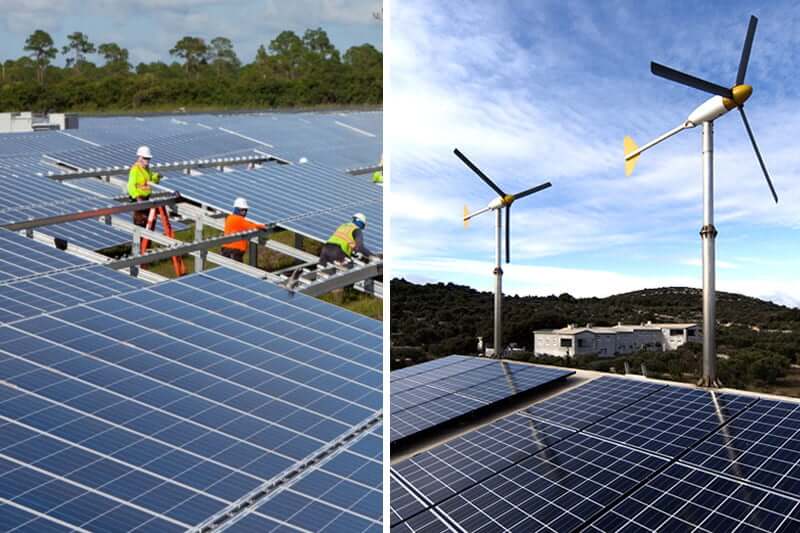
Depending on where you live, you may need to get a permit to install solar panels. Check with your local government offices on whether you need a permit and how much you need to pay. Your installer can advise you on whether you need a permit to install solar panels.
Your solar installer needs to inspect your roof before installation. If you have an old roof, you will need to replace it. You need a stable roof to install solar panels on. After inspection, your installer will recommend whether you need to change your roof or not before solar panel installation.
Before you install solar panels, the first thing you need to consider is cost. How much does a solar system cost to purchase and install? You can expect to pay from $3,000 to $12,000 depending on the size of the solar system you require.
Secondly, you need to consider the size of the solar system you require. Check your electricity bill to identify your power consumption. The solar system you acquire should produce as much power as you consume.
Third, you will need to find an accredited installer to install the solar panels for you. Gosolarquotes.com.au is a free tool to help you do this.
Also, consider whether you need to install a battery system with your solar panels. A battery system is expensive and raises the cost of your solar system.
Solar panels do work on cloudy days. Even on cloudy days, there is still some sunshine or heat from the sun that your solar panels can absorb. On cloudy days, your solar panels are not as efficient as on sunny days. They only produce 10-15% of the electricity on sunny days. There are advanced technology solar panels that work even on cloudy days.
A hybrid solar system is a combination of grid power and solar power. In a hybrid system, you have a solar system with a battery to store excess power produced by your panels. Additionally, you are connected to the electricity grid to which you can export your solar power or use it when need be.

When you install solar systems in your home, they help you to reduce the cost of your electricity bills. This is a result of the reduced use of grid electricity. When you have a feed-in tariff agreement, it also helps you to reduce your bill further and generate renewable electricity for the grid.
A feed-in tariff is an agreed-upon rate paid for the solar power you export to the grid from your solar panels. Usually, it helps to offset your electricity bill. It helps you save more money and bring a quick return on your investment.
You oversize your solar system when you have more solar panel capacity than your inverter capacity. For example, your 6.6kW solar system has a 5kW inverter. Oversizing the solar system ensures that your inverter is working at full capacity and helps you to get more power from your system. It also helps you to consider the future when you need to install a solar battery system.
Table of Contents
Toggle
